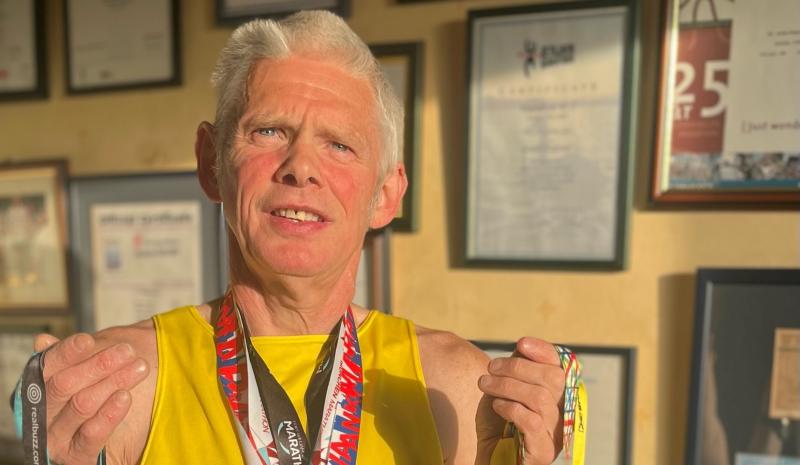News
Connemara cemeteries under threat

Connemara’s cemeteries – hemmed in so often between rugged mountains and wild Atlantic – are under threat like never before.
Because many of them are almost full – and extending or replacing them may cost millions.
On top of that, the landscape itself provides an even bigger challenge – because of the impact of the storms that wreaked such devastation at the start of the year.
“The high tides and storms in January and February have brought new issues into the picture” says Councillor Seán Ó Tuairisg.
“The Health Service Executive is closely monitoring any risk of flooding from high tides in the future; this is now a key part of the planning process for seaside cemeteries”.
A favourable report from the Health Service Executive is essential before the County Council can decide in favour of planning permission for work on a cemetery.
Councillor Ó Tuairisg says this could stymie efforts to provide more burial space in many locations in Connemara.
The storms in January and February had a severe impact on Connemara cemeteries; a coffin was partly unearthed in Baile na hAbhann, cemetery walls were damaged in areas such as Mweenish (Carna), Gurteen (Roundstone), Barr an Doire (an Cheathrua Rua).
Damage was also caused to old island cemeteries and human remains were washed ashore in many places.
Councillor Ó Tuairisg explains that many cemeteries were probably sited close to the shoreline in Connemara in the past because it was possible to get better depth there than in the rough lands nearby.
Local people in the close-knit communities of Connemara want to keep extensions, and new burial areas, adjoining – or close to – the old cemeteries.
“It’s a natural thing; that is where all belong to them are laid to rest”, Councillor Ó Tuairisg says. But the newer stringencies in the planning process will make it very difficult to get extensions on seaside burial grounds.
The situation in Leenane at the moment exemplifies the difficulties in finding suitable land for cemeteries in Connemara. The local cemetery, which stretches steeply down to the sea shore, is almost full.
Land is available directly to the north but it is not meeting present day planning criteria; the reason relates to the contour of the ground and its proximity to the sea.
“It is nearing crisis point”, says Seán Ó Tuairisg.
The difficulties in extending, or developing, burial areas in Connemara is compounded by the nature of the terrain.
“Eight feet is the depth that is stipulated, but there appears to be a derogation to six feet allowed in parts of Connemara. Only one coffin would be allowed at that depth,” Councillor Ó Tuairisg said.
However, six feet with adequate land filtration, can be very difficult to find in Connemara; substantial infill of earth would often be needed.
“That is the landscape we have – its renowned all over the world – but it is not ideal for cemeteries.
It is going to take a big investment of money to solve this problem. But we must face up to it,” Councillor Ó Tuairisg added.
Connacht Tribune
West has lower cancer survival rates than rest

Significant state investment is required to address ‘shocking’ inequalities that leave cancer patients in the West at greater risk of succumbing to the disease.
A meeting of Regional Health Forum West heard that survival rates for breast, lung and colorectal cancers than the national average, and with the most deprived quintile of the population, the West’s residents faced poorer outcomes from a cancer diagnosis.
For breast cancer patients, the five-year survival rate was 80% in the West versus 85% nationally; for lung cancer patients it was 16.7% in the west against a 19.5% national survival rate; and in the West’s colorectal cancer patients, there was a 62.6% survival rate where the national average was 63.1%.
These startling statistics were provided in answer to a question from Ballinasloe-based Cllr Evelyn Parsons (Ind) who said it was yet another reminder that cancer treatment infrastructure in the West was in dire need of improvement.
“The situation is pretty stark. In the Western Regional Health Forum area, we have the highest incidence of deprivation and the highest health inequalities because of that – we have the highest incidences of cancer nationally because of that,” said Cllr Parsons, who is also a general practitioner.
In details provided by CEO of Saolta Health Care Group, which operates Galway’s hospitals, it was stated that a number of factors were impacting on patient outcomes.
Get the full story in this week’s Connacht Tribune, on sale in shops now, or you can download the digital edition from www.connachttribune.ie. You can also download our Connacht Tribune App from Apple’s App Store or get the Android Version from Google Play.
Connacht Tribune
Marathon Man plans to call a halt – but not before he hits 160 races

On the eve of completing his 150th marathon, an odyssey that has taken him across 53 countries, Loughrea’s Marathon Man has announced that he is planning to hang up his running shoes.
But not before Jarlath Fitzgerald completes another ten races, making it 160 marathons on the occasion of his 60th birthday.
“I want to draw the line in 2026. I turn 57 in October and when I reach 60 it’s the finishing line. The longer races are taking it out of me. I did 20 miles there two weeks ago and didn’t feel good. It’s getting harder,” he reveals.
“I’ve arthritis in both hips and there’s wear and tear in the knees.”
We speak as he is about to head out for a run before his shift in Supervalu Loughrea. Despite his physical complaints, he still clocks up 30 miles every second week and generally runs four days a week.
Jarlath receives injections to his left hip to keep the pain at bay while running on the road.
To give his joints a break, during the winter he runs cross country and often does a five-mile trek around Kylebrack Wood.
He is planning on running his 150th marathon in Cork on June 4, where a group of 20 made up of work colleagues, friends and running mates from Loughrea Athletics Club will join him.
Some are doing the 10k, others are doing the half marathon, but all will be there on the finishing line to cheer him on in the phenomenal achievement.
Get the full story in this week’s Connacht Tribune, on sale in shops now, or you can download the digital edition from www.connachttribune.ie. You can also download our Connacht Tribune App from Apple’s App Store or get the Android Version from Google Play.
CITY TRIBUNE
Galway ‘masterplan’ needed to tackle housing and transport crises

From the Galway City Tribune – An impassioned plea for a ‘masterplan’ that would guide Galway City into the future has been made in the Dáil. Galway West TD Catherine Connolly stated this week that there needed to be an all-inclusive approach with “vision and leadership” in order to build a sustainable city.
Deputy Connolly spoke at length at the crisis surrounding traffic and housing in Galway city and said that not all of the blame could be laid at the door of the local authority.
She said that her preference would be the provision of light rail as the main form of public transport, but that this would have to be driven by the government.
“I sat on the local council for 17 years and despaired at all of the solutions going down one road, metaphorically and literally. In 2005 we put Park & Ride into the development plan, but that has not been rolled out. A 2016 transport strategy was outdated at the time and still has not been updated.
“Due to the housing crisis in the city, a task force was set up in 2019. Not a single report or analysis has been published on the cause of the crisis,” added Deputy Connolly.
She then referred to a report from the Land Development Agency (LDA) that identified lands suitable for the provision of housing. But she said that two-thirds of these had significant problems and a large portion was in Merlin Park University Hospital which, she said, would never have housing built on it.
In response, Minister Simon Harris spoke of the continuing job investment in the city and also in higher education, which is his portfolio.
But turning his attention to traffic congestion, he accepted that there were “real issues” when it came to transport, mobility and accessibility around Galway.
“We share the view that we need a Park & Ride facility and I understand there are also Bus Connects plans.
“I also suggest that the City Council reflect on her comments. I am proud to be in a Government that is providing unparalleled levels of investment to local authorities and unparalleled opportunities for local authorities to draw down,” he said.
Then Minister Harris referred to the controversial Galway City Outer Ring Road which he said was “struck down by An Bord Pleanála”, despite a lot of energy having been put into that project.
However, Deputy Connolly picked up on this and pointed out that An Bord Pleanála did not say ‘No’ to the ring road.
“The High Court said ‘No’ to the ring road because An Bord Pleanála acknowledged it failed utterly to consider climate change and our climate change obligations.
“That tells us something about An Bord Pleanála and the management that submitted such a plan.”
In the end, Minister Harris agreed that there needed to be a masterplan for Galway City.
“I suggest it is for the local authority to come up with a vision and then work with the Government to try to fund and implement that.”












